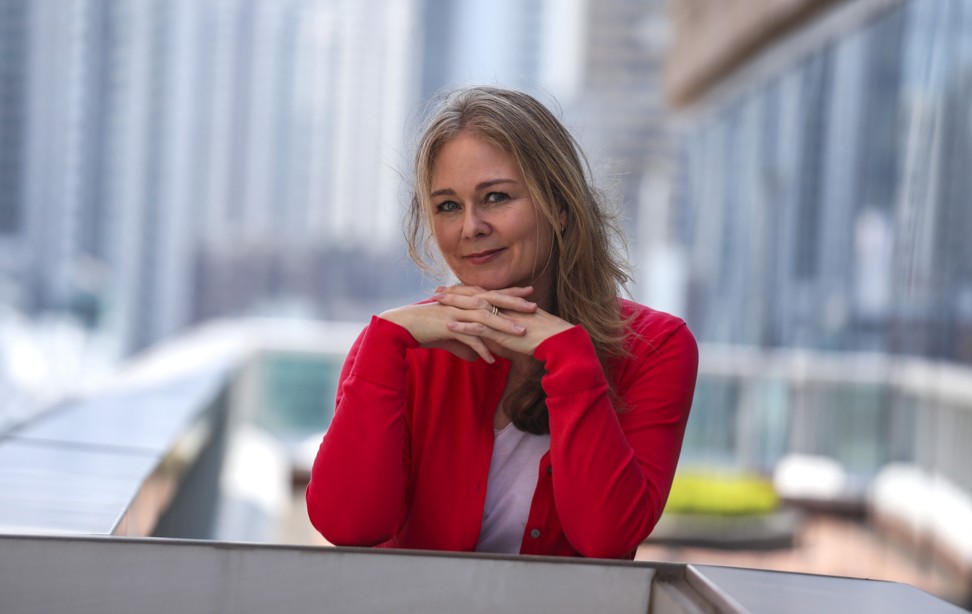
Endangered languages: linguist creating written language in Nepal uses novel tactic to get villagers talking – an eye clinic to cure blindness
- Hong Kong-based linguist Cathryn Donohue wanted to preserve the language of the isolated, spread out Nubri people, but first she had to get them together
- Her solution? Free eye clinics specialising in cataract surgery, which gave back sight to many villagers who had been blind for years
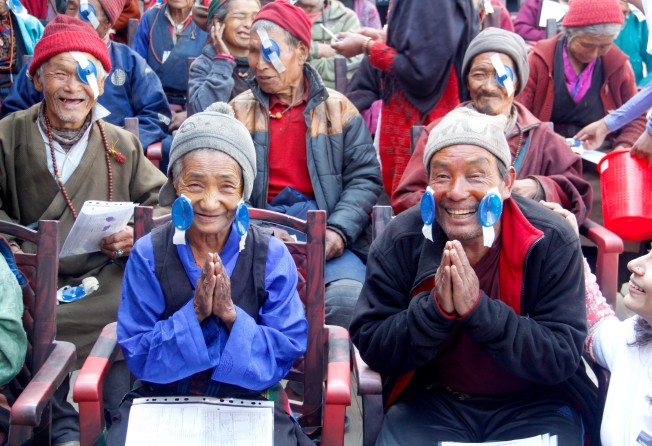
Breathtaking images of snow-capped mountains taken in Nepal’s Nubri Valley, an isolated area 4,000 metres (13,000 feet) above sea level in the Himalayas bordering Tibet, cover the windows of Cathryn Donohue’s room at the University of Hong Kong (HKU).
“Mount Manaslu is the world’s eighth tallest peak and it’s so beautiful, especially when the sun lights it up like a volcano,” says Donohue, assistant professor of the university’s linguistics department, pointing to a picture of the mountain that presides over the valley. “Nubri Valley is on the Manaslu circuit trek, and while it’s not on travellers’ radar like the well-worn Annapurna circuit in central Nepal, it’s getting more popular.”
Donohue, an Australian who has been to the Nubri Valley about eight times, is well informed about the place and the Nubri people, who are believed to have settled in the valley from Tibet about 400 years ago. But her speciality is the language of Nubri, spoken only by about 2,000 ethnically Tibetan people and which has no written form.
“A quarter of the population in Nubri Valley is monolingual – there’s no English, no Nepali,” she says.

She explains that it is the isolation of the area – which was hit by a powerful earthquake in 2015 that either damaged or destroyed 80 per of the homes in its villages – that has long protected the Nubri language from being influenced by the national language.
“It’s very remote, about a week’s walk from one end to the other. The trek is challenging – narrow and steep – and unless you’re carrying something heavy like rice that requires mules, then it’s walking all the way, usually climbing about 500 metres a day.”
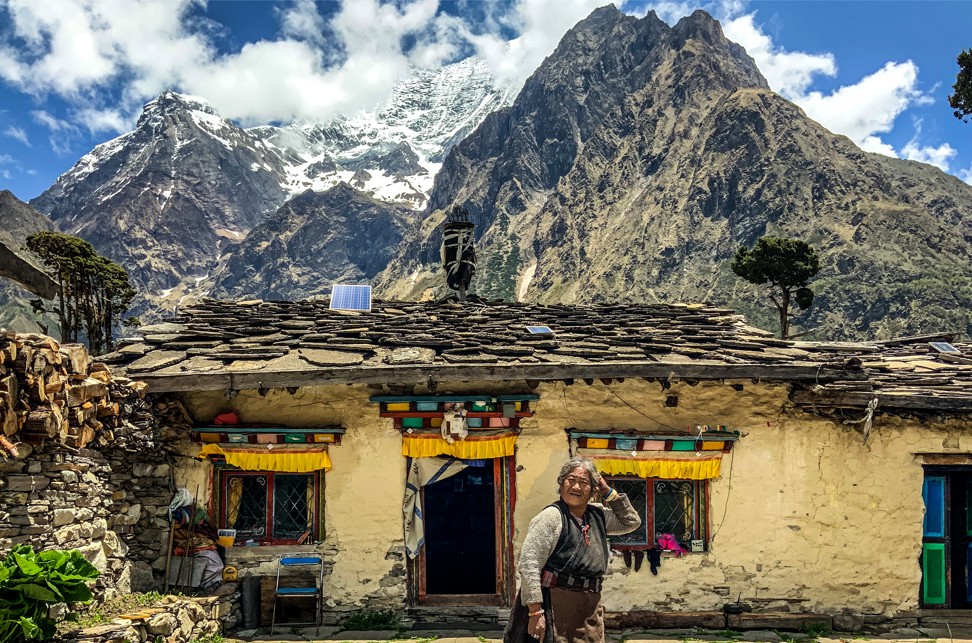
But changing times means the Nubri people’s language is under threat, with the United Nations Educational, Scientific and Cultural Organisation (Unesco) having it on its list of “definitely endangered” languages – meaning its future is uncertain.
One of the main reasons is societal change as a growing number of young people swap a traditional life of subsistence farming in the valley for school in the capital, Kathmandu, where Nepali is the language of instruction.
“Following in their parents’ footsteps and working on farms, or wearing traditional dress – this is not the lifestyle the younger generation wants, and it’s this change that is bringing about the language shift towards Nepali,” Donohue says. “For young people, Nepali represents all the socioeconomic opportunities they would not have if they stayed in the valley.”
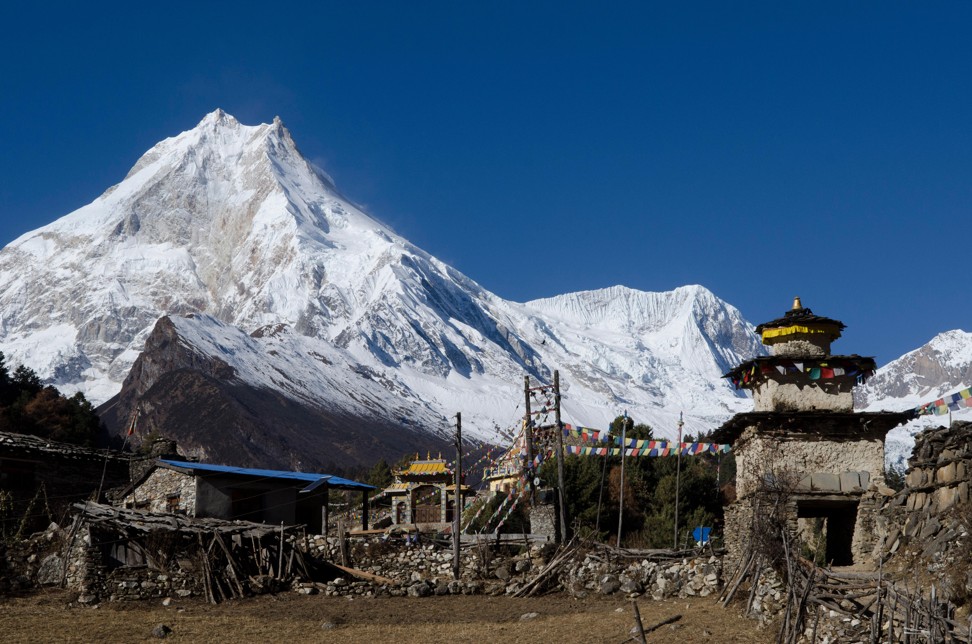
Technology is also fuelling the shift, as more young people use Nepali and English on smartphones and social media platforms such as YouTube and Facebook.
“Nubri has no written language, which means it’s very easy to lose. In fact it’s possible that in a generation the language will be gone,” Donohue says, adding that currently, on average, a language is lost once every fortnight worldwide.
Understanding the vital role language plays in a culture and its identity, Donohue was determined to help preserve Nubri by introducing a writing system, a proven step towards language preservation and improved literacy.
“It could be a cool secret language and could be something to latch on to as part of their identity. Something the people of the valley can be proud of,” she says.

The Nubri Language Project was born, with Donohue taking on the role of language diplomat as a “passive observer”.
“Obviously, I’m not going to tell young Nubris to adopt the way of life of previous generations. And nobody would deny them the opportunities in front of them,” she says. “But the big challenge is how to move forward in a way that’s inevitable while retaining a language.”
Creating and documenting a community-endorsed written language had its challenges, the biggest of which was finding a way to bring together villagers who were scattered across locations four to five days’ trek apart.
“A writing system is only successful if the whole community is on board. We needed to give villagers a reason to come together and discuss how we could create this writing system, to provide an incentive.”

That’s when Donohue had a light-bulb moment: to create the valley’s first eye clinic project, specialising in the screening and removal of cataracts, a condition that causes clouding of the eye’s natural lens and results in blurred vision.
“Health care services in the valley are poor and I noticed a lot of elderly people had cataracts that were not treated because financial or physical constraints prevented them from making the long and expensive journey to Kathmandu. Plus there were other issues, like who would look after the land and animals while the farmers made the two-to-three-week round trip?
“Setting up free and more conveniently located eye clinics throughout the valley was a unique opportunity for these farmers.”
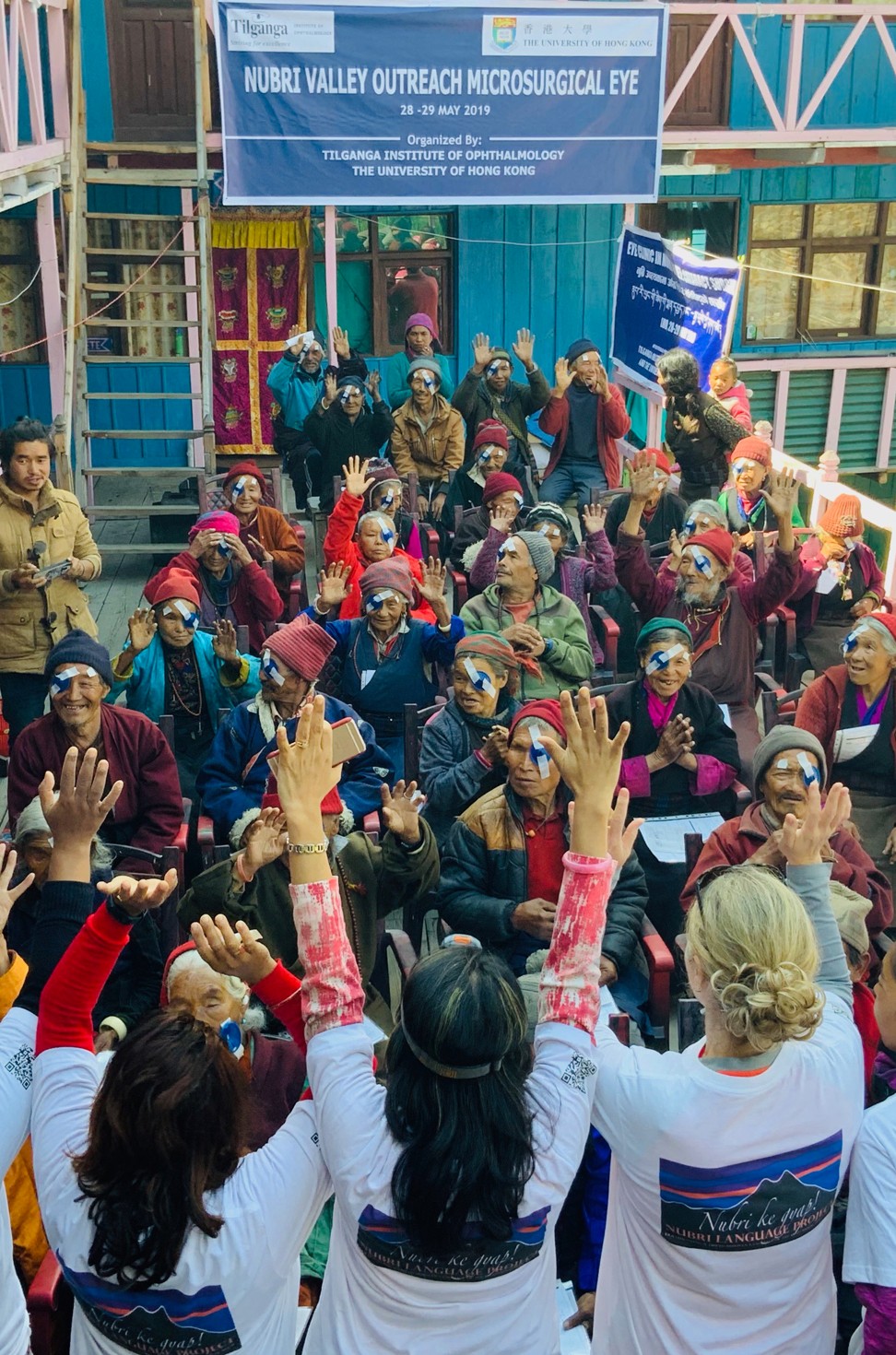
Logistics also proved challenging, but the path was smoothed when one of Donohue’s previous projects, in Bhutan, where she studied the Bumthang language, led to a connection with respected Nepalese ophthalmologist Dr Sanduk Ruit.
Known locally as the “God of Sight”, Ruit has restored the vision of more than 130,000 people across Africa and Asia using small-incision cataract surgery. He is also a founder of the Tilganga Institute of Ophthalmology in Kathmandu.
“Dr Ruit is well known for his outreach work in Africa and I was so happy that he and the Tilganga Institute agreed to do the project,” Donohue says.
“It was such a blessing to have someone of his calibre get involved. If he was not on board it would have been a long process involving a lot of administration work arranging overseas medical permits and paperwork – a real nightmare. But it all fell into place and I now count these familiar faces as friends and not just distant colleagues. It really could not have worked out better.”

In May, a team of ophthalmologists, with financial support from an HKU grant, packed helicopters with equipment and medicine and set up six free clinics for eye care and cataract surgery throughout the valley.
“The team was familiar with the conditions in these remote villages and how to prep for surgery – it took a whole day just to sterilise one room for surgery,” Donohue says. “And because the doctors and their team were from Kathmandu, and not outsiders, it was easy for patients to respond.”
I have a lot of recordings but it takes time transcribing Nubri and English. There will be video with subtitles – eventually it will be deposited in an archive
Almost 500 patients from the valley were screened for cataracts and other ailments, resulting in cataract removal surgery for 51 villagers. Cataract surgery involves replacing the cloudy lens with an artificial one, done under local anaesthetic.
“People came from all over the valley, some walking for days,” Donohue says. “Some were blind in both eyes, and were carried by family members.” One 78-year-old woman who underwent cataract surgery had been blind for six years. To get to the clinic, her nephew carried her on his back for five days.
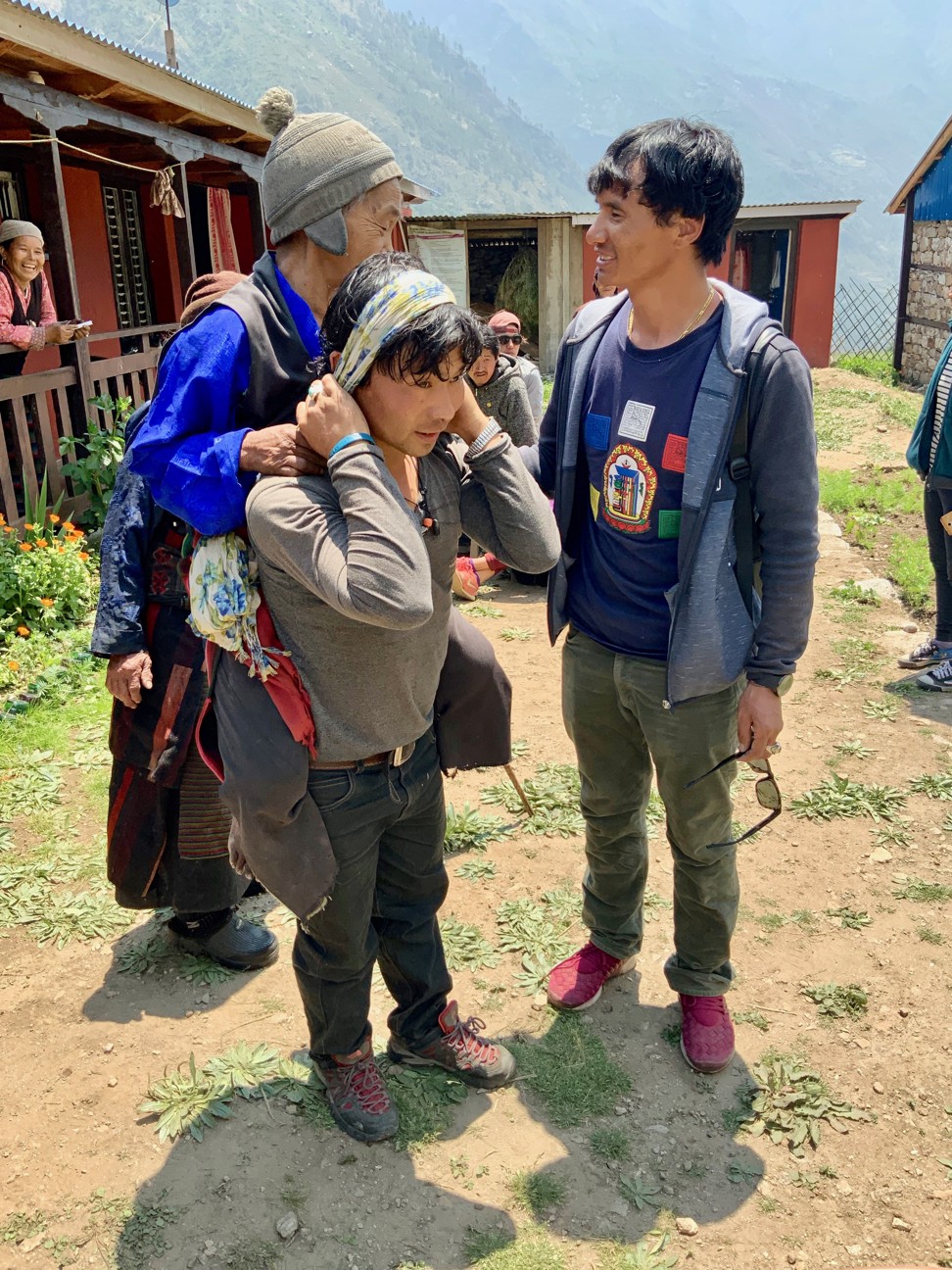
Agreeing on a common written language was another challenge, one complicated by dialect variation within the valley that had been recently discovered. It is a slow and methodical process, Donohue says, one that calls for cultural sensitivity and diplomacy.
“The community as a whole had to endorse and agree which writing system would best suit the whole region, and bringing people together via the clinics made this possible.”
Donohue’s ongoing work has catalogued the only recorded samples of the language.
“I have a lot of recordings but it takes time transcribing Nubri and English. There will be video with subtitles – eventually it will be deposited in an archive.”
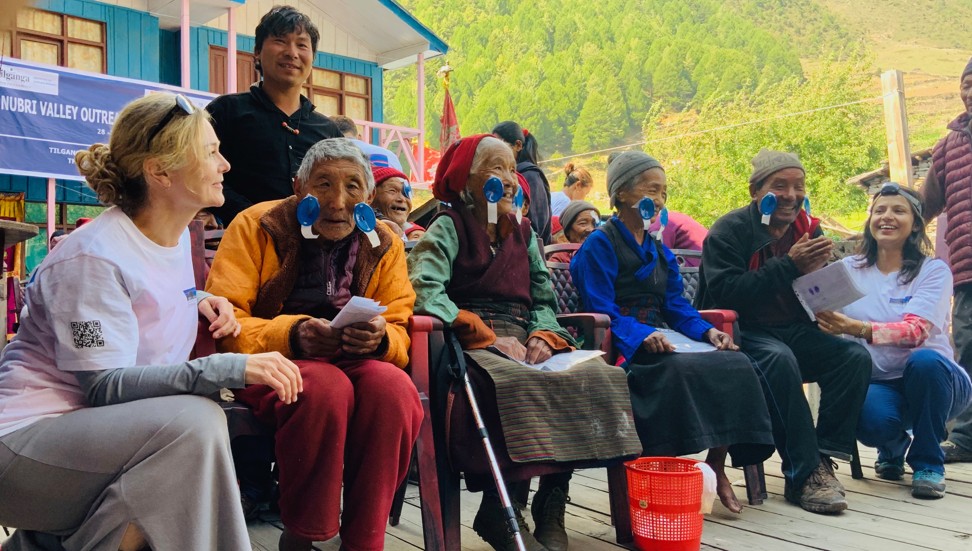
Like her brother, renowned linguist Mark Donohue – who has worked on languages of Indonesia, Papua New Guinea, Nepal and Bhutan – Donohue’s focus has long been on Sino-Tibetan languages. One project she is working on is close to Hong Kong’s heart.
“I’m working on some indigenous Hong Kong dialects that existed before what we know as Cantonese,” she says. “I want to understand the social factors behind language change, in particular loss. I love studying tone, so Hong Kong is perfect for me.”
For more details about the Nubri Language Project visit linguistics.hku.hk/nubri